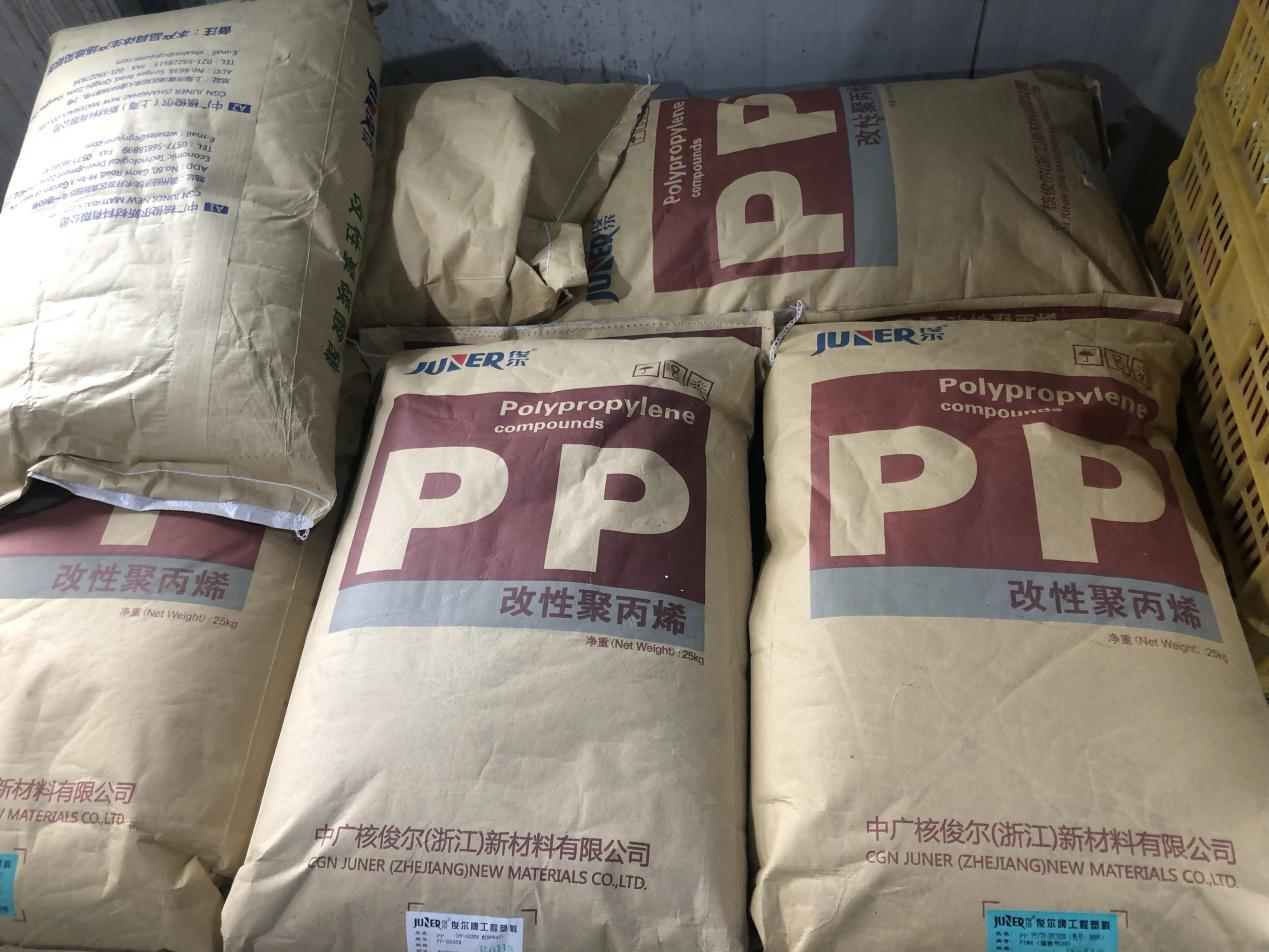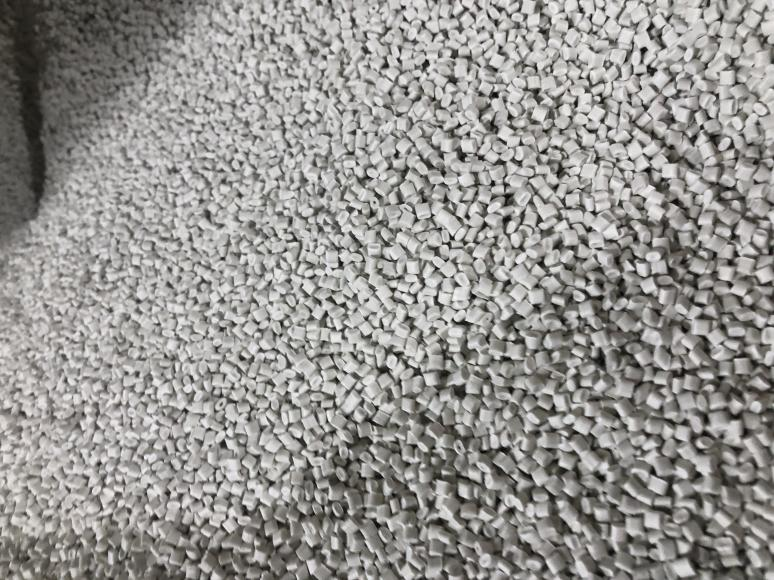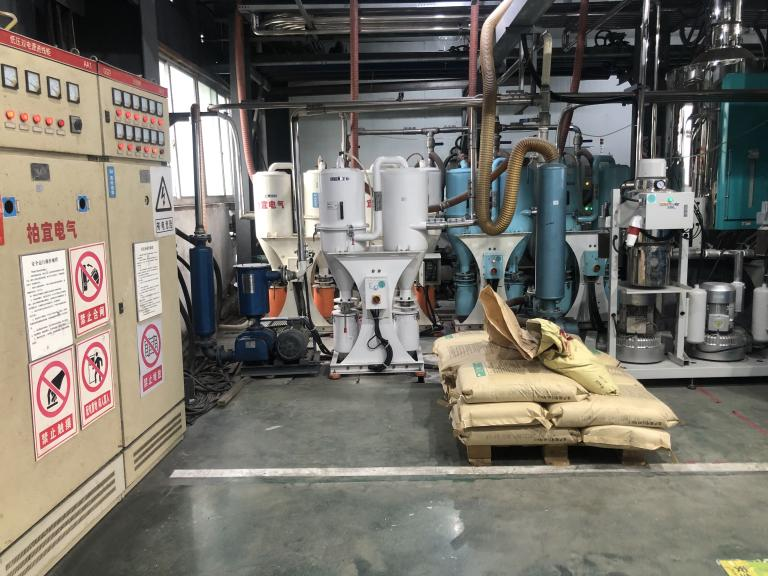By Andy from Baiyear factory
Upated November 2, 2022
Here is the news center of Baiyear’s injection molding industry. Next, Baiyear will divide the injection molding process into several articles to introduce the analysis of the raw materials of the injection molding process, because there are too many content. Next is the fourth article.

(8). PP (polypropylene)
1. The performance of PP
PP is a crystalline high polymer. Among the commonly used plastics, PP is the lightest, with a density of only 0.91g/cm3 (smaller than water). Among the general-purpose plastics, PP has the best heat resistance, its heat distortion temperature is 80-100 ℃, and it can be boiled in boiling water. PP has good stress cracking resistance and high flexural fatigue life, commonly known as “folding glue”.
The comprehensive performance of PP is better than that of PE material. PP products have light weight, good toughness and good chemical resistance. Disadvantages of PP: low dimensional accuracy, insufficient rigidity, poor weather resistance, easy to produce “copper damage”, it has the phenomenon of post-shrinkage, and after demolding, it is easy to age, become brittle, and easy to deform. PP has been the main raw material for making fibers because of its coloring ability, abrasion and chemical resistance properties, and favorable economic conditions.
PP is a semi-crystalline material. It is harder and has a higher melting point than PE. Since homopolymer PP is very brittle at temperatures above 0 °C, many commercial PP materials are random copolymers with 1 to 4% ethylene added or pincer copolymers with higher ethylene content. The copolymer-type PP material has a lower thermal distortion temperature (100 ° C), low transparency, low gloss, low rigidity, but has a stronger impact strength. The strength of PP increases with increasing ethylene content.
The Vicat softening temperature of PP is 150°C. Due to the high degree of crystallinity, this material has good surface stiffness and scratch resistance properties.

PP does not have environmental stress cracking problems. Typically, PP is modified by adding glass fibers, metal additives or thermoplastic rubber. The flow rate MFR of PP ranges from 1 to 40. PP materials with low MFR have better impact resistance but lower ductility. For the same MFR material, the strength of the copolymer type is higher than that of the homopolymer type.
Due to crystallization, the shrinkage rate of PP is quite high, generally 1.8~2.5%. And the directional uniformity of shrinkage is much better than that of materials such as HDPE. Adding 30% glass additive can reduce the shrinkage to 0.7%.
Both homopolymer and copolymer PP materials have excellent moisture absorption resistance, acid and alkali corrosion resistance, and solubility resistance. However, it is not resistant to aromatic hydrocarbon (such as benzene) solvents, chlorinated hydrocarbon (carbon tetrachloride) solvents, etc. PP is also not as resistant to oxidation at high temperatures as PE.
2. Process characteristics of PP
PP has good fluidity at melting temperature and good molding performance. PP has two characteristics in processing:
One: The viscosity of PP melt decreases significantly with the increase of shear rate (it is less affected by temperature);
The second: the degree of molecular orientation is high and the shrinkage rate is large. The processing temperature of PP is 220~275℃. It is better not to exceed 275℃. It has good thermal stability (decomposition temperature is 310℃), but at high temperature (270-300℃), it will stay in the barrel for a long time. There is a possibility of degradation. Since the viscosity of PP decreases significantly with the increase of shear speed, increasing the injection pressure and injection speed will improve its fluidity and improve shrinkage deformation and depression. Mold temperature (40~80℃), 50℃ is recommended.
The degree of crystallization is mainly determined by the temperature of the mold, which should be controlled within the range of 30-50 °C. The PP melt can pass through a very narrow die gap and appear draped. During the melting process of PP, it needs to absorb a large amount of fusion heat (larger specific heat), and the product is hotter after being ejected from the mold.
PP material does not need to be dried during processing, and the shrinkage and crystallinity of PP are lower than those of PE. Injection speed Usually high speed injection can be used to minimize internal pressure. If there are defects on the surface of the product, then lower speed injection at higher temperatures should be used. Injection pressure: up to 1800bar.
Runners and gates: For cold runners, typical runner diameters range from 4 to 7mm. It is recommended to use sprues and runners with round bodies. All types of gates can be used. Typical gate diameters range from 1 to 1.5mm, but gates as small as 0.7mm can also be used. For edge gates, the minimum gate depth should be half the wall thickness; the minimum gate width should be at least twice the wall thickness, and PP materials can fully use a hot runner system.
PP has been the main raw material for making fibers because of its coloring ability, abrasion and chemical resistance properties, and favorable economic conditions.
3. Typical application range:
Automotive industry (mainly using PP with metal additives: fenders, ventilation pipes, fans, etc.), appliances (dishwasher door liners, dryer ventilation pipes, washing machine frames and covers, refrigerator door liners, etc.), daily Consumer goods (lawn and garden equipment such as lawnmowers and sprinklers, etc.).
Injection molding is the second largest market for PP homopolymers, including containers, closures, automotive applications, household goods, toys and many other consumer and industrial end uses.

(9). PA (nylon)
1. Performance of PA
PA is also a crystalline plastic (nylon is a tough angular translucent or milky white crystalline resin). As an engineering plastic, the molecular weight of nylon is generally 15,000-30,000, and there are many varieties. Commonly used nylon 6, nylon 66, and nylon 1010 for injection molding , Nylon 610, etc.
Nylon has toughness, wear resistance and self-lubrication, and its advantages are mainly high organic mechanical strength, good toughness, fatigue resistance, smooth surface, high softening point, heat resistance, low friction coefficient, wear resistance, self-lubrication, shock absorption And noise reduction, oil resistance, weak acid resistance, alkali resistance and general solvent resistance, good electrical insulation, self-extinguishing, non-toxic, odorless, good weather resistance.
The disadvantage is that the water absorption is large, and the dyeing property is poor, which affects the dimensional stability and electrical properties. Fiber reinforcement can reduce the water absorption rate and enable it to work under high temperature and high humidity. Nylon has very good affinity with glass fiber (can be used for a long time at 100°C), corrosion resistance, light weight and easy molding. The main disadvantages of PA are: easy to absorb water, strict technical requirements for injection molding, and poor dimensional stability. Because of its large specific heat, the product is hot.
PA66 is the highest mechanical strength and the most widely used variety in the PA series. Its crystallinity is high, so its rigidity, hardness and heat resistance are high. PA1010 was first created in my country in 1958, with translucent, small specific gravity, high elasticity and flexibility, lower water absorption than PA66, and reliable dimensional stability.
Among nylons, nylon 66 has the highest hardness and rigidity, but the worst toughness. Various nylons are sorted by toughness: PA66<PA66/6<PA6<PA610<PA11<PA12
The flammability of nylon is ULS44-2, the oxygen index is 24-28, the decomposition temperature of nylon is > 299 ℃, and spontaneous combustion will occur at 449~499 ℃. Nylon has good melt fluidity, so the wall thickness of the product can be as small as 1mm.
2. Process characteristics of PA
2.1. PA is easy to absorb moisture, so it must be fully dried before processing, and the moisture content should be controlled below 0.3%. The raw materials are well dried and the product gloss is high, otherwise it will be rough, and the PA will not gradually soften with the increase of the heating temperature, but will soften in a narrow temperature range close to the melting point. Flow occurs (different from PS, PE, PP, etc.).
The viscosity of PA is much lower than other thermoplastics, and its melting temperature range is narrow (only about 5 ℃). PA has good fluidity, easy to fill and form, and easy to take off. The nozzle is prone to “salivation”, and the glue needs to be larger.
PA has a high melting point and a high freezing point. The molten material in the mold will solidify at any time because the temperature drops below the melting point, which hinders the completion of the filling molding. Therefore, high-speed injection must be used (especially for thin-walled or long-flow parts). Nylon molds should have adequate exhaust measures.
In the molten state, PA has poor thermal stability and is easy to degrade. The temperature of the barrel should not exceed 300 °C, and the heating time of the molten material in the barrel should not exceed 30 minutes. PA has high requirements on the mold temperature, and the crystallinity can be controlled by the mold temperature to obtain the required performance.
The mold temperature of PA material is preferably 50-90°C, the processing temperature of PA1010 is preferably 220-240°C, and the processing temperature of PA66 is 270-290°C. PA products sometimes require “annealing treatment” or “humidity conditioning treatment” according to quality requirements.
2.2.PA12 Before processing polyamide 12 or nylon 12, the humidity should be kept below 0.1%. If the material is stored exposed to air, it is recommended to dry in hot air at 85C for 4~5 hours. If the material is stored in an airtight container, it can be used immediately after 3 hours of temperature equilibration. The melting temperature is 240~300C; for ordinary materials, it should not exceed 310C, and for materials with flame retardant properties, it should not exceed 270C.
Mold temperature: 30~40C for unreinforced materials, 80~90C for thin-walled or large area components, and 90~100C for reinforced materials. Increasing the temperature will increase the crystallinity of the material. Precise control of mold temperature is important for PA12. Injection pressure: up to 1000bar (low holding pressure and high melting temperature are recommended). Injection speed: high speed (better for materials with glass additives).
Runner and gate: For materials without additives, the diameter of the runner should be around 30mm due to the low viscosity of the material. For reinforced materials, a large runner diameter of 5~8mm is required. The runner shape should be all circular. The injection port should be as short as possible.
Various forms of gates can be used. Do not use small gates for large plastic parts, this is to avoid excessive pressure or excessive shrinkage on the plastic parts. The thickness of the gate is preferably equal to the thickness of the plastic part. If using a submerged gate, a minimum diameter of 0.8mm is recommended. Hot runner molds are effective, but require precise temperature control to prevent material from leaking or solidifying at the nozzle. If a hot runner is used, the gate size should be smaller than that of a cold runner.
2.3.PA6 Polyamide 6 or Nylon 6: Since PA6 can easily absorb moisture, special attention should be paid to the drying before processing. If the material is supplied in waterproof packaging, the container should be kept tightly closed. If the humidity is greater than 0.2%, it is recommended to dry in hot air above 80C for 16 hours. If the material has been exposed to air for more than 8 hours, vacuum drying at 105C for more than 8 hours is recommended.
Melting temperature: 230~280C, 250~280C for reinforced varieties. Mold temperature: 80~90C. Mold temperature significantly affects crystallinity, which in turn affects the mechanical properties of plastic parts. Crystallinity is very important for structural parts, so the recommended mold temperature is 80~90C.
Higher mold temperatures are also recommended for thin-walled, longer-process plastic parts. Increasing the mold temperature can increase the strength and stiffness of the plastic part, but it reduces the toughness. If the wall thickness is greater than 3mm, it is recommended to use a low temperature mold of 20~40C. For glass reinforcement, the mold temperature should be greater than 80C. Injection pressure: generally between 750~1250bar (depending on material and product design).
Injection speed: high speed (slightly lower for reinforced materials). Runners and gates: Due to the short solidification time of PA6, the location of the gate is very important. The gate diameter should not be less than 0.5*t (here t is the thickness of the plastic part). If a hot runner is used, the gate size should be smaller than with conventional runners, as the hot runner can help prevent premature solidification of the material. If a submerged gate is used, the minimum diameter of the gate should be 0.75mm.
2.4.PA66 Polyamide 66 or Nylon 66 If the material is sealed before processing, then drying is not necessary. However, if the storage container is opened, drying in hot air at 85C is recommended. If the humidity is greater than 0.2%, vacuum drying at 105C for 12 hours is required.
Melting temperature: 260~290C. The product for glass additive is 275~280C. Melting temperature should be avoided higher than 300C. Mold temperature: 80C is recommended. Mold temperature will affect crystallinity, and crystallinity will affect the physical properties of the product.
For thin-walled plastic parts, if a mold temperature lower than 40C is used, the crystallinity of the plastic parts will change with time. In order to maintain the geometric stability of the plastic parts, annealing treatment is required. Injection pressure: usually 750~1250bar, depending on material and product design. Injection speed: high speed (slightly lower for reinforced materials).
Runners and gates: Since the solidification time of PA66 is very short, the location of the gate is very important. The gate diameter should not be less than 0.5*t (here t is the thickness of the plastic part). If a hot runner is used, the gate size should be smaller than with conventional runners, as the hot runner can help prevent premature solidification of the material. If a submerged gate is used, the minimum diameter of the gate should be 0.75mm.
3. Typical application range:
3.1. PA12 Polyamide 12 or Nylon 12 Applications: Water meters and other commercial equipment, cable sleeves, mechanical cams, sliding mechanisms and bearings, etc.
3.2. PA6 Polyamide 6 or Nylon 6 Application: It is widely used in structural parts due to its good mechanical strength and stiffness. Because of its good wear resistance, it is also used to manufacture bearings.
3.3. PA66 Polyamide 66 or Nylon 66 Application: Compared with PA6, PA66 is more widely used in the automotive industry, instrument housings and other products that require impact resistance and high strength requirements.
To be continued, if you want to know more, please feel free to contact us. Baiyear is a large-scale comprehensive factory integrating plastic mold manufacturing, injection molding and sheet metal processing. Or you can continue to pay attention to the news center of our official website: www.baidasy.com , we will continue to update the knowledge news related to the injection molding processing industry.
Contact:Andy Yang
What’s app : +86 13968705428
Email: Andy@baidasy.com
Post time: Nov-29-2022






